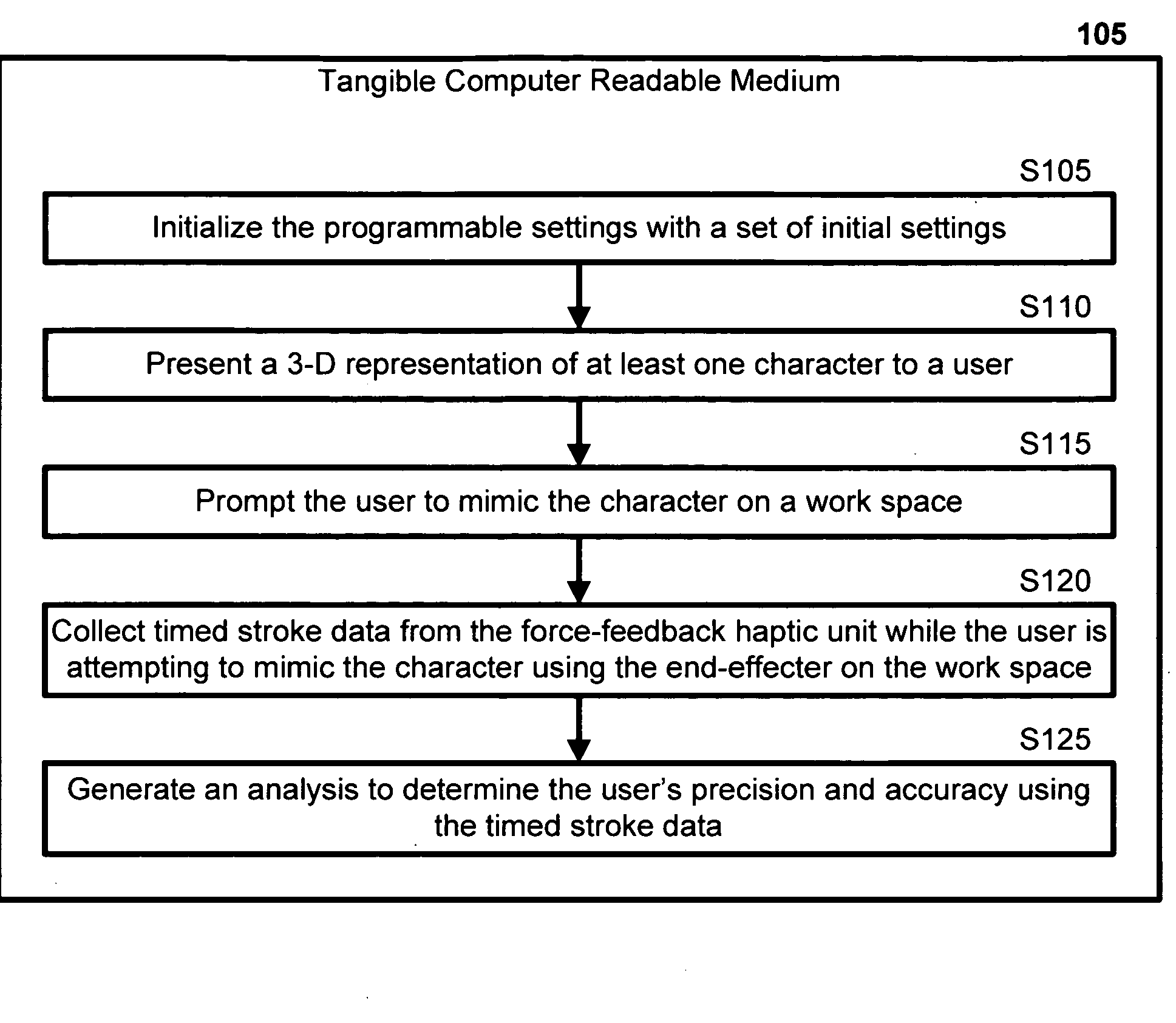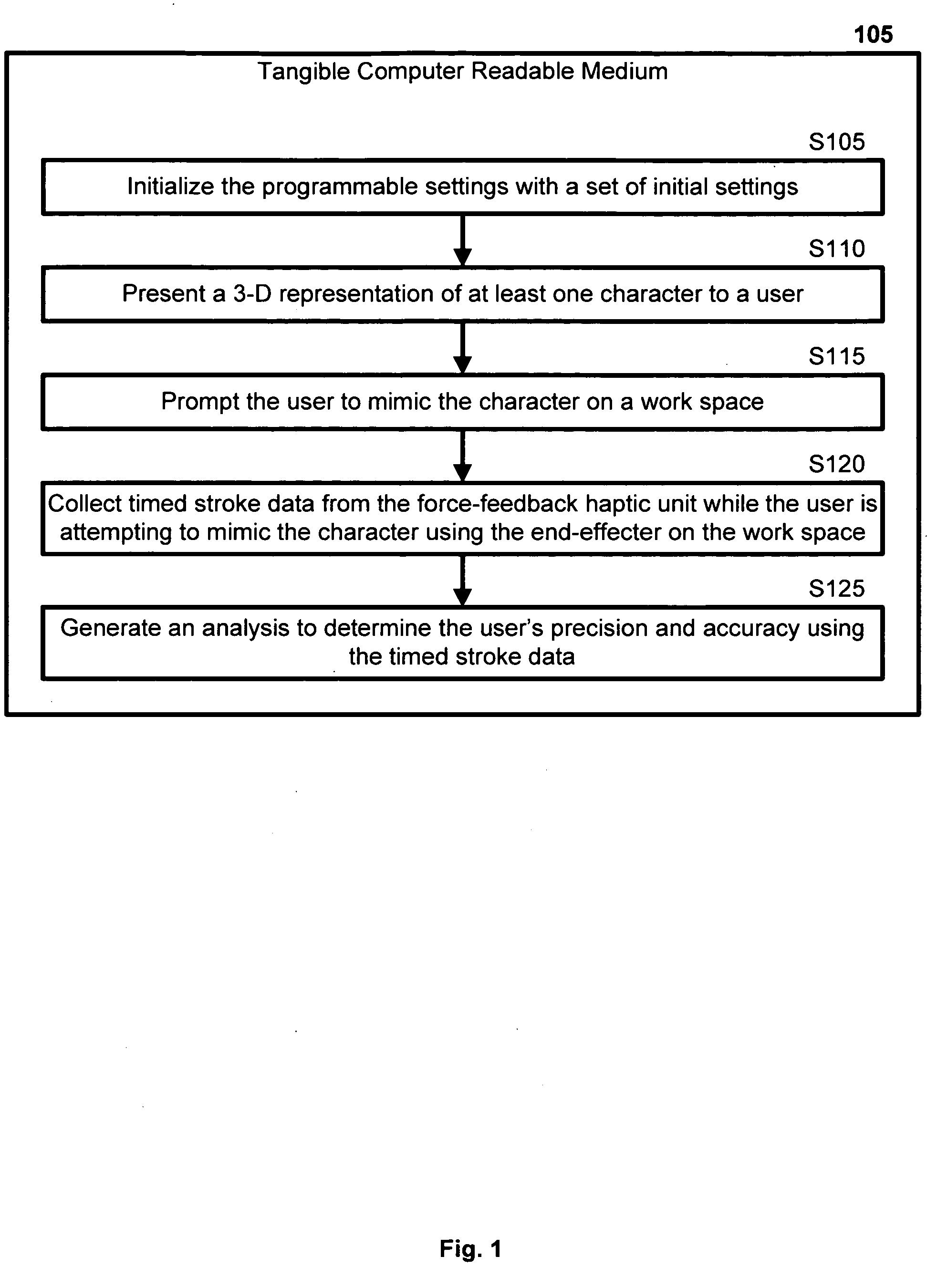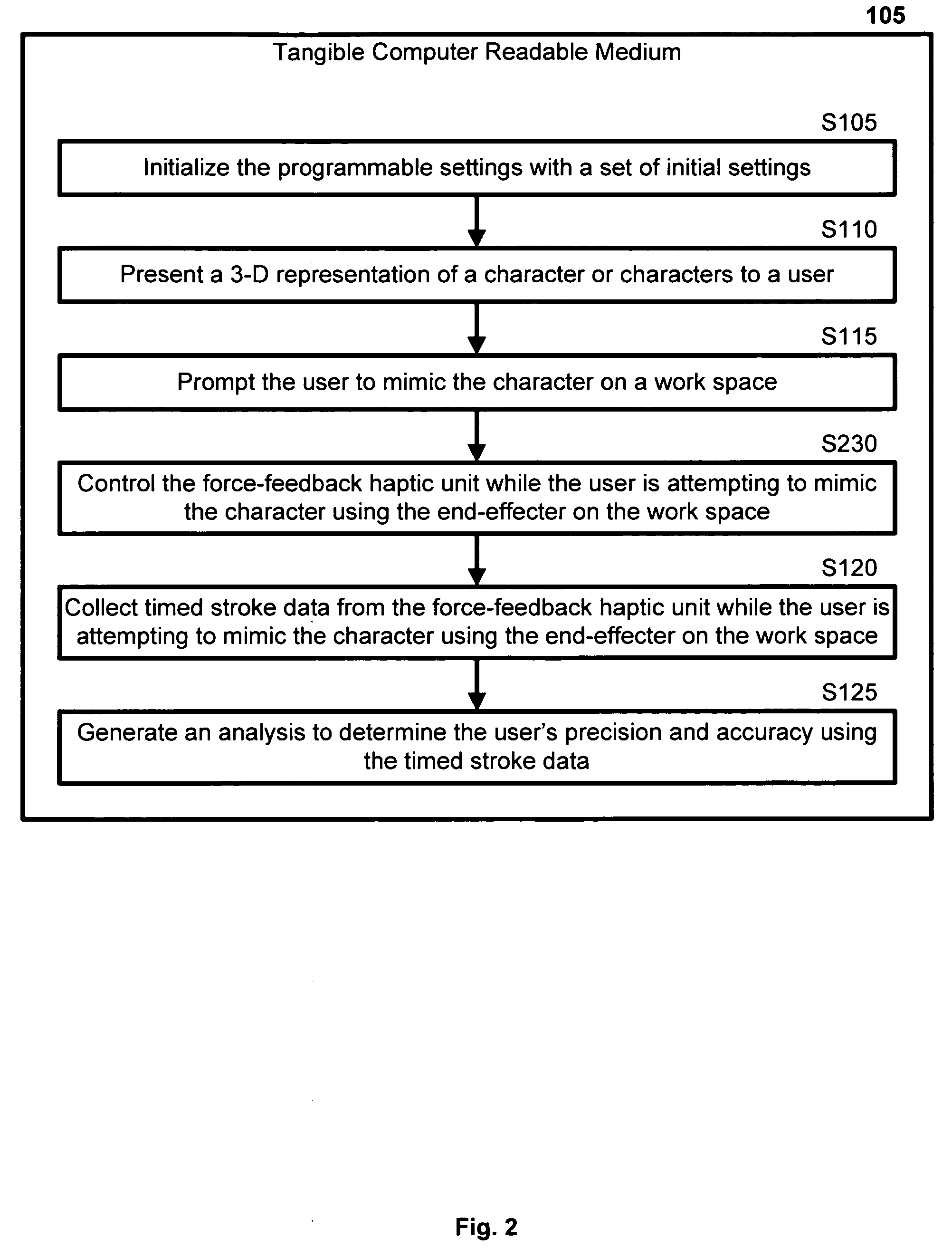Fine-motor execution using repetitive force-feedback
a technology of forcefeedback and fine motor, applied in the direction of electric digital data processing, instruments, computing, etc., can solve the problems of omitting proprioceptive feedback, omitting connection definitively, and very complex handwriting process
- Summary
- Abstract
- Description
- Claims
- Application Information
AI Technical Summary
Problems solved by technology
Method used
Image
Examples
Embodiment Construction
[0011]The present invention embodies a technique for teaching individuals to learn how to write characters with the aid of a haptic device. In particular, these individuals are likely to be deficient with fine-motor skills and / or poor handwriting skills. Characters can be in the form of any language (e.g., English, Spanish, French, Greek, Chinese, Japanese, etc.) and can include alphanumeric characters, symbols, words and sentences, geometric shapes, markings, and punctuation. It should be noted that this listing of various types of characters is endless and that those that are mentioned merely serve as representative examples.
[0012]Overall, the present invention uses a force-feedback peripheral haptic unit, which may be connected to a computer. The computer may enable “sense of touch” instructions in drawing, printing or cursively writing characters via repetitive-motions. Training individuals with this sense of touch and repetitive motion can help stimulate the growth of their neu...
PUM
 Login to View More
Login to View More Abstract
Description
Claims
Application Information
 Login to View More
Login to View More - R&D
- Intellectual Property
- Life Sciences
- Materials
- Tech Scout
- Unparalleled Data Quality
- Higher Quality Content
- 60% Fewer Hallucinations
Browse by: Latest US Patents, China's latest patents, Technical Efficacy Thesaurus, Application Domain, Technology Topic, Popular Technical Reports.
© 2025 PatSnap. All rights reserved.Legal|Privacy policy|Modern Slavery Act Transparency Statement|Sitemap|About US| Contact US: help@patsnap.com



